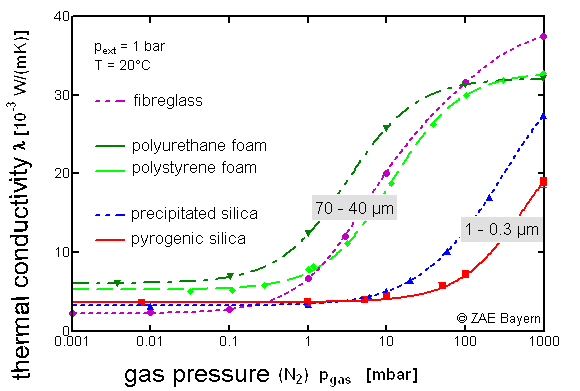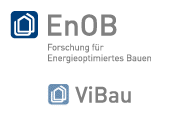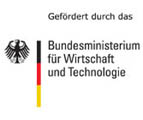Vacuum insulation panels: How VIPs work
Heat transfer in an insulation material comprises- thermal conduction through the porous solid
- thermal radiative transfer through the solid
- thermal conduction via the gas within the pores of the solid
The degree to which the residual gas pressure has to be reduced depends on the pore sizes of the VIP core. Nanoporous powder cores are particularly insusceptible to pressure increases (cf. graph below). The thermal conductivity of a VIP is only doubled when the pressure in the core reaches 100 mbar. Even if the envelope fails completely, the thermal conductivity of fumed pyrogenic silica is still under 20·10-3 W/(m·K). The increase in thermal conductivity in coarser-structured porous cores starts at residual gas pressures of just 0.1 to 1 mbar; the envelope must therefore be particularly gas-tight, made, for instance, out of stainless steel.



